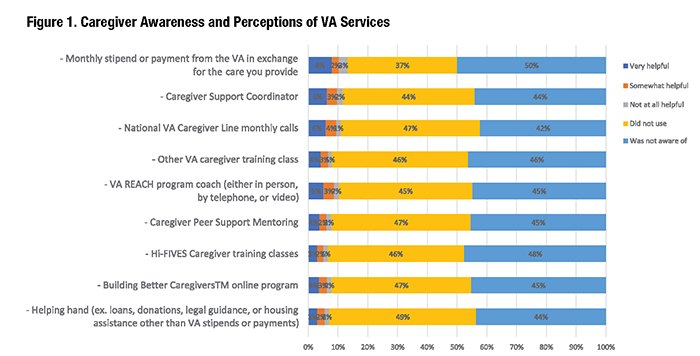
|
|
Research HighlightSupporting the Needs of Caregivers through ResearchIn this issue’s lead article, Meg Kabat, LCSW-C, CCM, Principal Senior Advisor, Offce of the Secretary, outlines the history of legislative actions that created important and innovative programs to support caregivers of Veterans, including the Program of Comprehensive Services for Family Caregivers (PCAFC) and the Program of General Support Services for Caregivers (PGSSC). With the implementation of these programs, and the more general expansion of VA’s mission to include families, caregivers, and survivors, the VA Health Services Research & Development (HSR&D) program vigorously supports research related to caregivers of Veterans, enabling the VA research community to partner with operational and policy leaders, and provide them with data to ensure that programs have maximal impact. The Elizabeth Dole Center of Excellence for Veteran and Caregiver Research, the VA CARES partnered evaluation program, and the VA Caregiver Center are all examples of research initiatives that are closely partnered with operations. VA CARES has partnered with the Caregiver Support Program (CSP) to evaluate the PCAFC, an effort that has identifed important program impacts. First, the evaluation found that PCAFC increases Veteran use of high-value care, though overall costs of Veteran care in this program have also increased. Second, the program has signifcantly reduced caregiver self-reported fnancial strain, and has led to increased interactions between caregivers, and VA staff and clinicians. VA researchers found that 40 percent of program participants between 2011 and 2016 were discharged, identifying subgroups of Veterans more likely to be discharged, and enabling CSP leadership to adapt the program in ways that could improve equity. VA CARES researchers also noted persistently high caregiver emotional strain during the COVID-19 pandemic, potentially mitigated by VA’s rapid implementation of virtual services. Ms. Kabat notes the diffculties that program leaders may have in understanding the daily challenges and care gaps experienced by caregivers of Veterans, and how these challenges evolve over time. These gaps include both home-based supports provided by VA and its community partners, as well as trainings to enable caregivers themselves to be as effective as possible. Researchers in the Elizabeth Dole Center of Excellence have used multiple approaches to understand caregivers’ experiences over time; interviews and focus groups conducted by this team generated important new insights including the following fndings:
A longitudinal survey of Veterans and their caregivers has provided additional insights regarding unmet needs.
Despite improvements in service awareness, more work is needed to ensure that Veterans, their caregivers, and clinicians are aware of relevant programs. Ms. Kabat speaks to the need to better understand the home environment, family systems, and lived experiences of caregivers of Veterans. Researchers in the Elizabeth Dole Center of Excellence have laid the groundwork for this program of research.
Additionally, Ms. Kabat notes the need to develop more interventions to support the varied and individualized needs of caregivers. The VA Caregiver Support Program, through its national VA Caregiver Center, is assessing the use and impact of Annie, the VA Offce of Connected Care’s automated short-message service for guided self-management. During the COVID-19 pandemic, stress-management texts were deployed through Annie. In fact, 47 percent of caregivers found these texts to be helpful and wanted them to continue post-pandemic. These text protocols are being expanded in response to this feedback. There are currently eight caregiver-focused protocols with over 14,000 caregivers enrolled to date. Finally, Ms. Kabat highlights the need to identify Veterans who are caregivers (and vice versa) – including those Veterans who are part of the VA workforce. VA research teams are developing strategies to provide this important information for leadership. 
|
|